We all know what’s coming next. We’ve got a whole week to do that.
And we all know where we’ve been, which is a huge part of what makes where we are so incredible. More on that in a bit.
But this team continues to be most about the present tense. And today, Tennessee gave us the kind of game we haven’t seen since…
…well, again, the comparisons would be so very long ago, and take away from the present. Let’s resist for at least a moment.
The Vols got their third ranked win of the season. But where Pittsburgh and Florida came down to the final play, today Tennessee asserted themselves with the quickness. And one hidden truth of the Pitt and Florida games not only came to light, but turned in Tennessee’s favor.
Against the Panthers, Tennessee fumbled, muffed a punt, and had a punt blocked in the last 1.5 quarters of regulation. The Gators, of course, recovered an onside kick. Credit the opposition for their role in those things, but they’re also components of football that involve a higher degree of luck than your average play. And when you put all those plays together? Snap for snap, Tennessee was the clearly better team both times.
Today, the Vols got the other end of those special teams plays, early and often. They left Tennessee with a 10-0 lead less than four minutes in. Credit LSU for keeping the game within reach for the remainder of the first half; on the day, they forced five Tennessee field goals. Credit Chase McGrath for making four of them, an upright away from making five.
And that’s the thing: Tennessee attempted five field goals and punted twice. We can do this better.
And the Vols won 40-13.
We won 40-13 because Tennessee’s defense did the following:
- Three-and-out
- A stop on 4th-and-4 at the 14
- A stop on 4th-and-1 near midfield
- A punt after a 3rd-and-4 sack from Byron Young
- LSU TD
- A stop on 4th-and-10 near midfield on another sack from Byron Young, giving the Vols eight yards to the good and another field goal just before halftime
- A punt after a 3rd-and-8 sack from, you guessed it, Byron Young on LSU’s first drive of the third quarter
- Three-and-out
- LSU TD
- End zone INT
The Vols outgained the Tigers 502 to 355. Tennessee did it with balance – 239 in the air, 263 on the ground – and where the Tigers went 0-for-3 on fourth down, the Vols were a Les Milesian 3-for-3.
Jabari Small followed his 90 yards against the Gators with 122 in Baton Rouge, the second-highest total of his career. Without Cedric Tillman once again, Bru McCoy provided the quantity with seven catches for 140 yards. And Jalin Hyatt provided the quality alongside Hendon Hooker:
The Vols, favored by three, won by 27 in Baton Rouge.
“Are we back?!”
I’ve been thinking a bit about one of the least talked about games in one of our most talked about seasons. It wasn’t least talked about on the way in: six years ago, #1 Alabama came to Knoxville to face #9 Tennessee. The Vols were banged up, and coming to the end of an impossible stretch of opponents and emotions. We don’t talk about it, in part, because more infamous things happened to the Vols later in that season. And, in part, because Alabama dominated, again. The Vols were +13 at kickoff on that day; I’ll be curious to see the comparison tomorrow.
But that, already, was the highest-ranked Third Saturday in October ever.
And as long as Alabama doesn’t do something strange tonight, next week will top it.
But as much as the Alabama rivalry means to us, even it isn’t the lone qualifier.
The opportunity that was before Tennessee six years ago came at the midpoint of year four under Butch Jones. It came through wins that will last forever on their own: Florida, Georgia, a unique environment with Virginia Tech. And the reasons the 2016 season itself won’t last forever came later with South Carolina and Vanderbilt. But year four also carried some of the frustrations of year three, when the Vols went 9-4 but were close to so much more.
And at the same time, those two seasons and those two 9-4s are the best it’s been around here in 15 years. No single-season breakthrough. In those 15 years, Tennessee’s three biggest rivals have won eight national championships. There have been so few opportunities for the kind of thing we saw Texas do to Oklahoma today, a statement win in a series that matters. The Longhorns may not be back to the rest of us, but I’m sure it feels like they are on their own terms today. Good for them!
But we are an Alabama win tonight away from Tennessee being back to everyone in the country this week.
In 15 years, we never found the middle ground between 9-4s in years three and four, and true national relevance. Almost all of our resets via coaching change were strange, the last two in both quality and quantity and carrying with them a change in athletic director. The Vols spent an entire month at the end of the 2020 season not knowing who their head coach would be in 2021. Tennessee seemed more vulnerable than ever.
In year one, the Vols blew out Missouri and South Carolina, the first signs of life. They showed an incredible atmosphere was still possible against Ole Miss. And they beat a ranked team, taking down #18 Kentucky, before finishing 7-6. Those were good first steps.
And now, it feels like we’ve skipped several again.
Because next Saturday, Tennessee is going to find itself on the following list.
On January 1, 1968, #2 Tennessee played #3 Oklahoma in the Orange Bowl. Since then – 55 years – here are the highest ranked vs ranked games the University of Tennessee has played in:
Highest Ranked vs Ranked Games since 1968
- 1998: #1 Tennessee vs #2 Florida State (BCS Championship) (W 23-16)
- 1997: #2 Nebraska vs #3 Tennessee (Orange Bowl) (L 42-17)
- 1996: #2 Tennessee vs #4 Florida (L 35-29)
- 1997: #2 Florida vs #4 Tennessee (L 33-20)
- 1999: #2 Tennessee at #4 Florida (L 23-21)
- 2001: #2 Florida vs #5 Tennessee (W 34-32)
- 1990: #3 Auburn vs #5 Tennessee (T 26-26)
- 1995: #4 Tennessee vs #4 Ohio State (Citrus Bowl) (W 20-14)
- 1998: #2 Florida at #6 Tennessee (W 20-17 OT)
- 1999: #3 Nebraska vs #6 Tennessee (Fiesta Bowl) (L 31-21)
If Alabama wins tonight, next week is going to be, from a national standpoint, one of the ten biggest games Tennessee has played in for most of our lifetimes.
That’s the list for me. That’s the test. That’s the question, and we’ll spend the week trying to figure out how Tennessee will answer it.
You can think whatever you want about “back”; that’s a question we already learned we can’t really even answer until the entire story of this season has been written. This team has skipped so many steps in this rebuild – in that rebuild? – comparisons are hard to come by.
So never mind back.
The Vols are here.
Beat Bama.
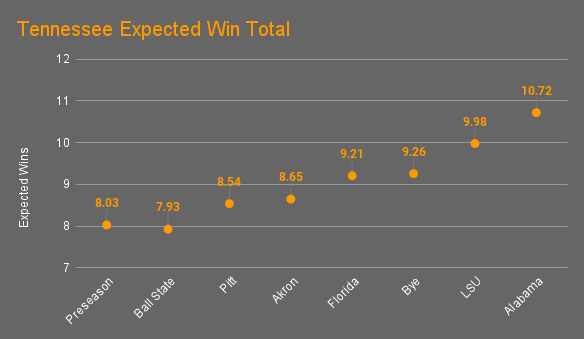
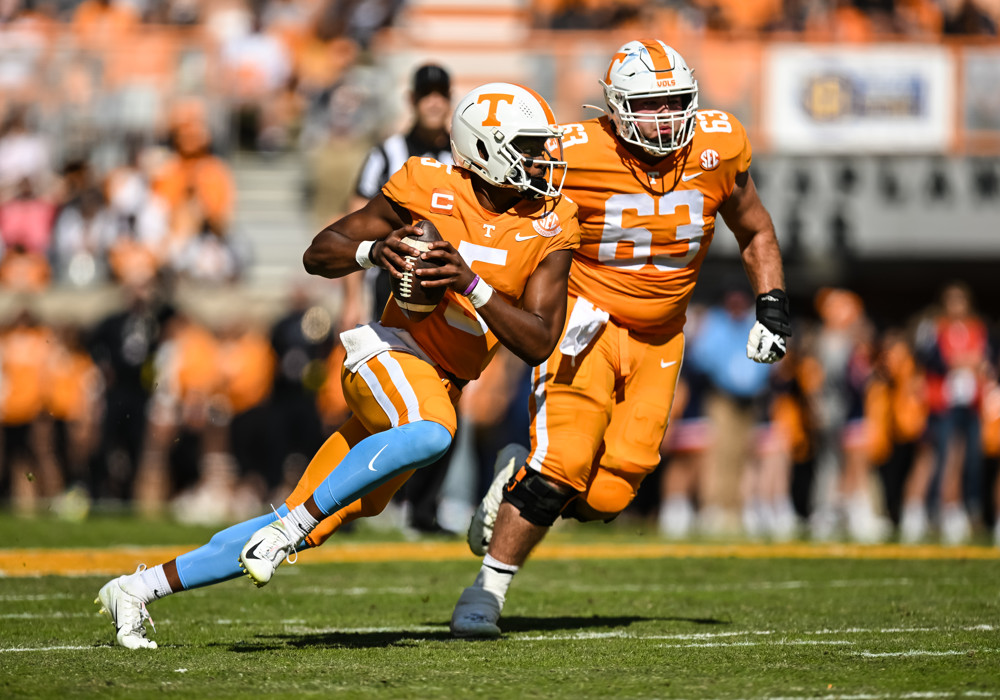
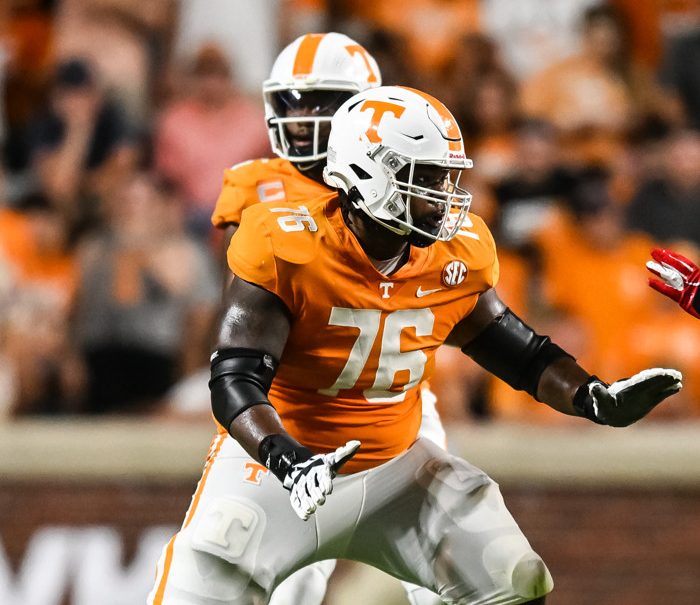

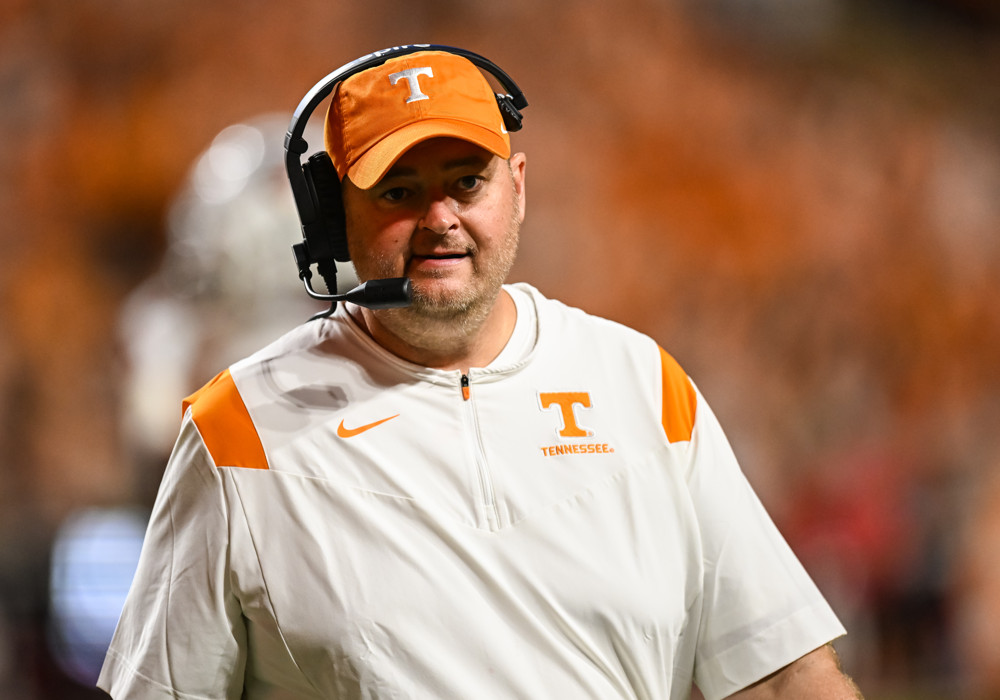
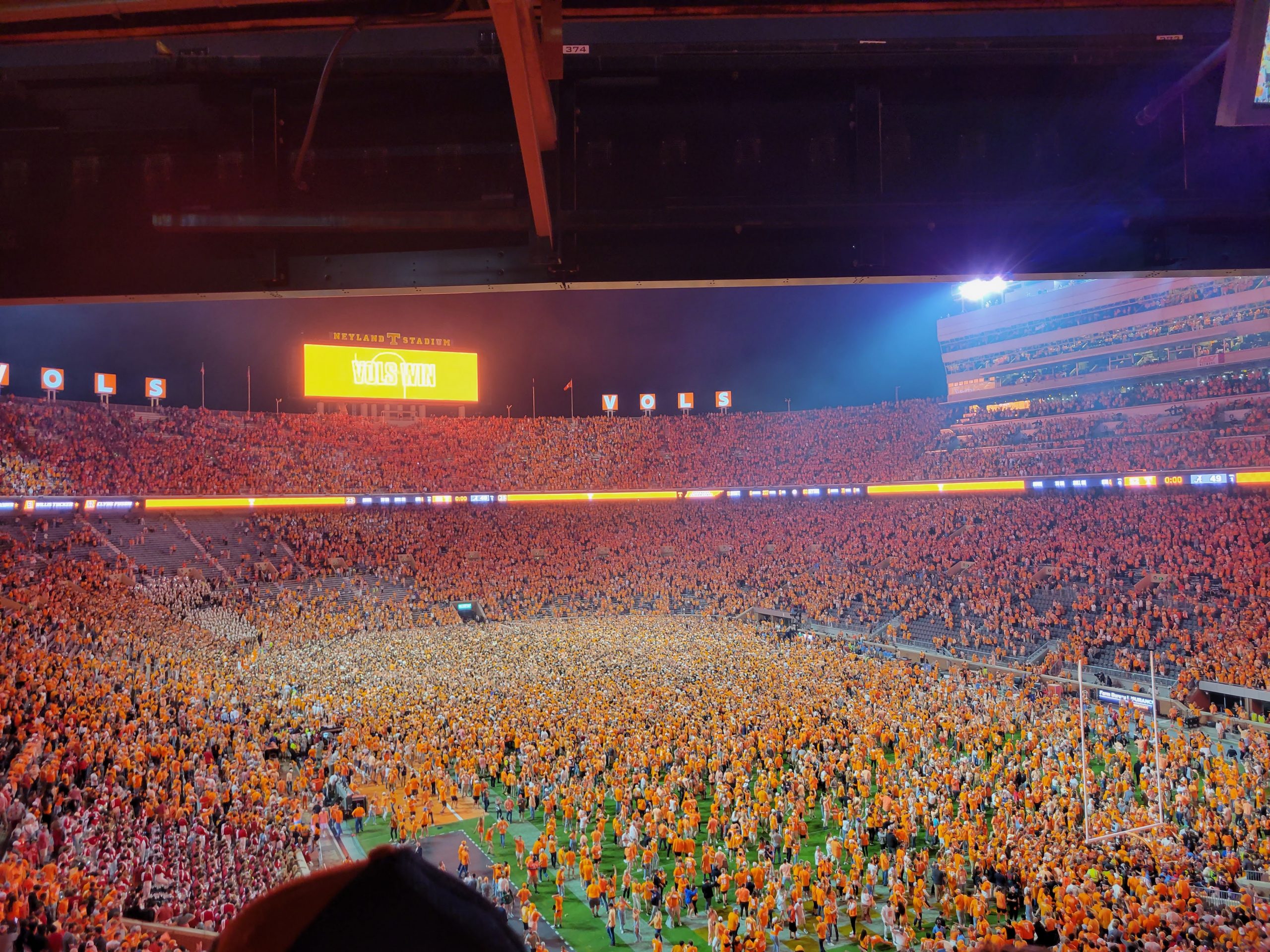
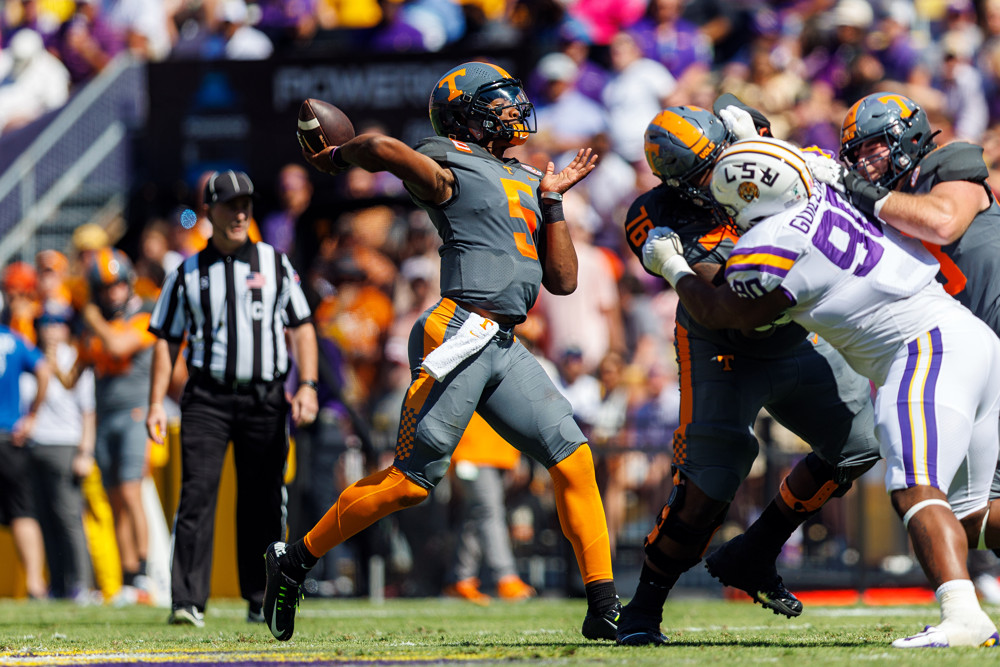
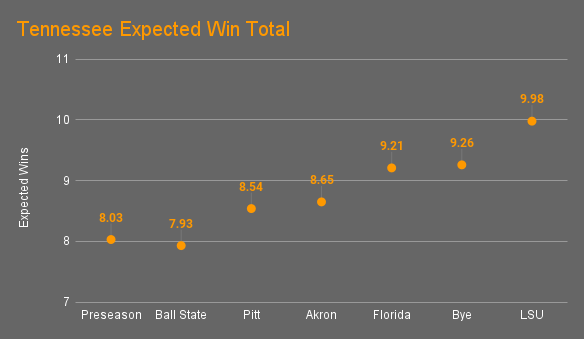
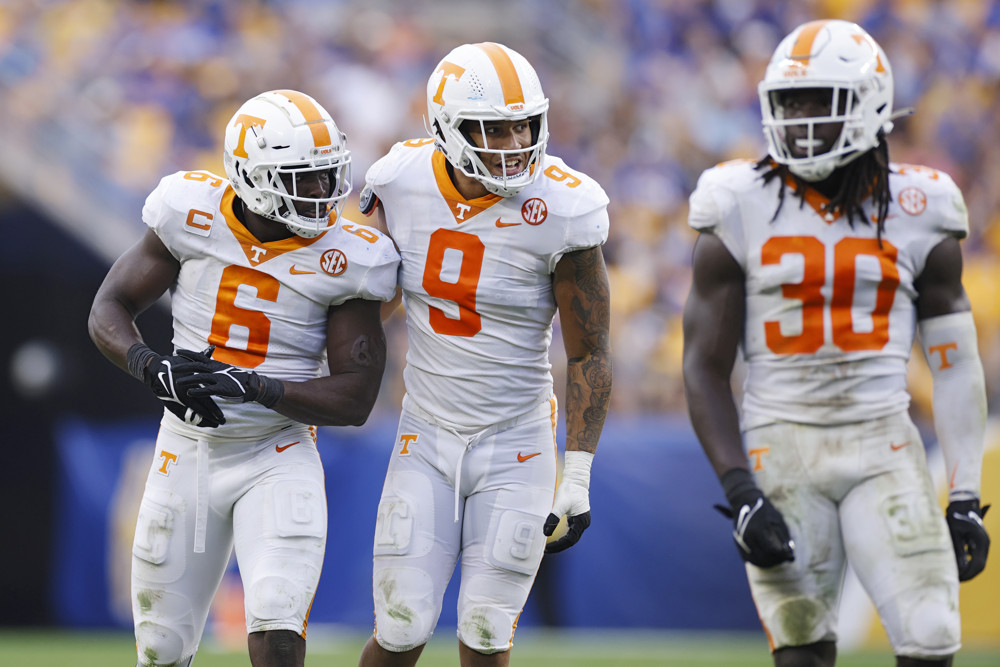
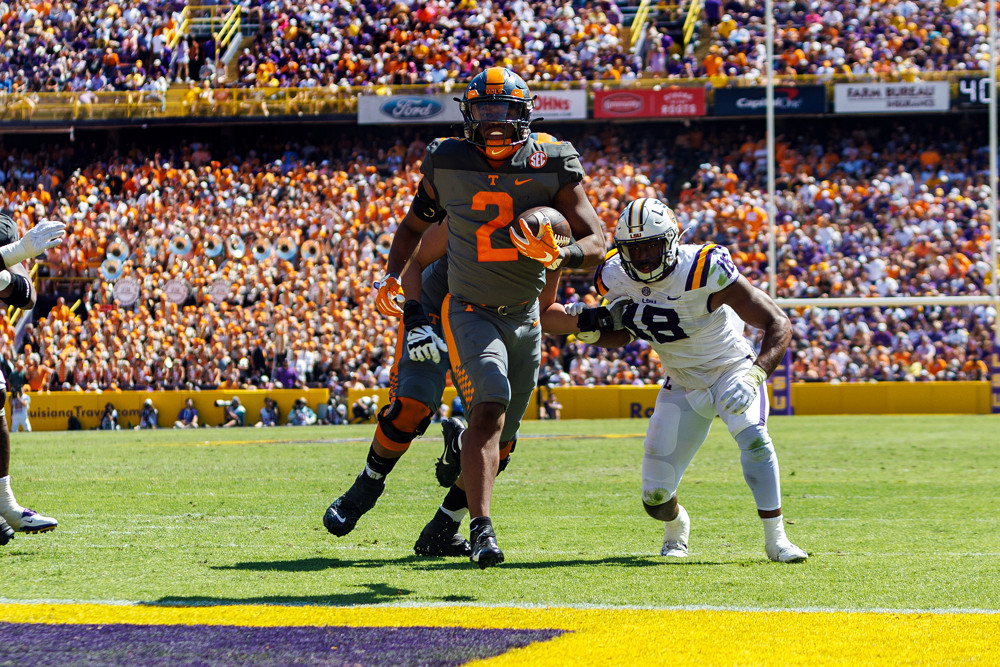
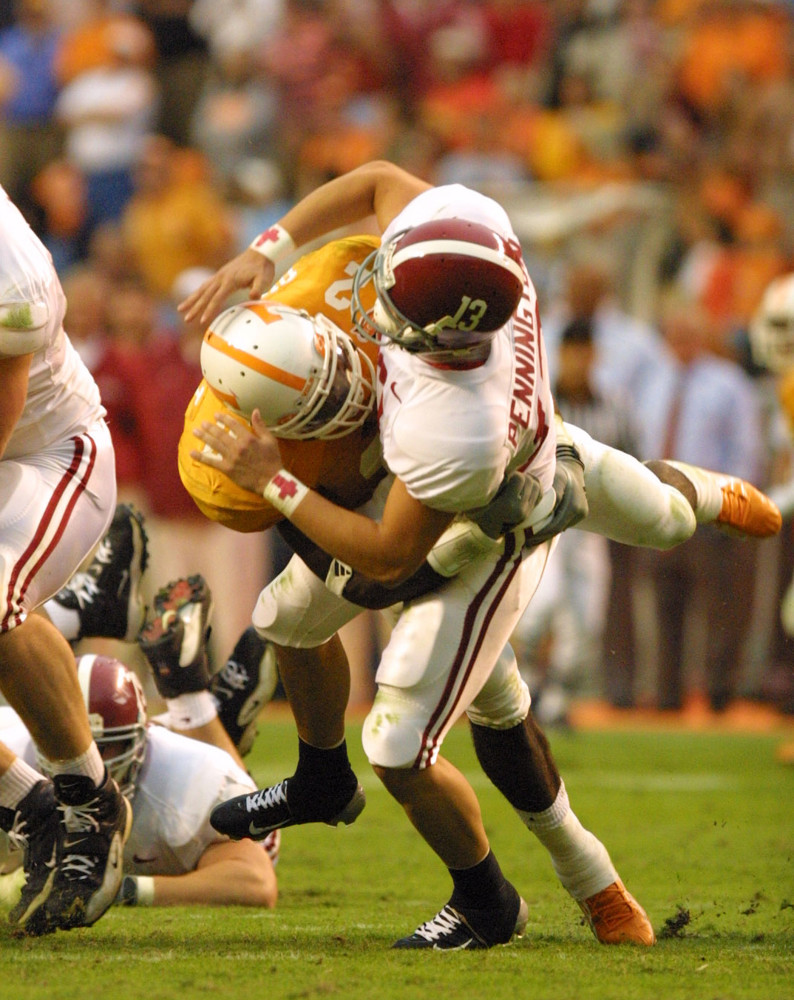
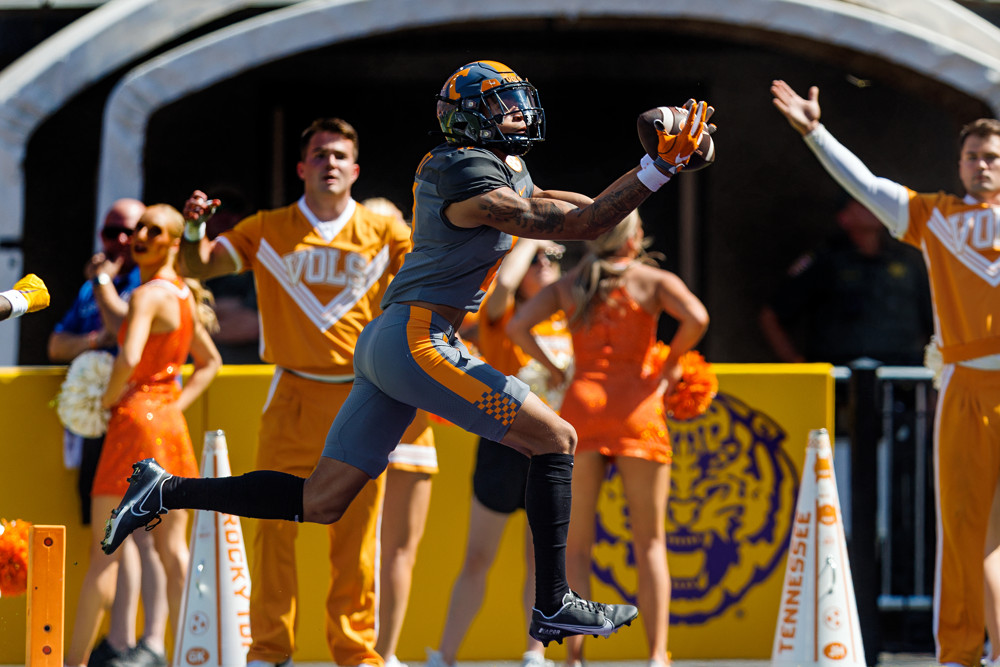
You must be logged in to post a comment.